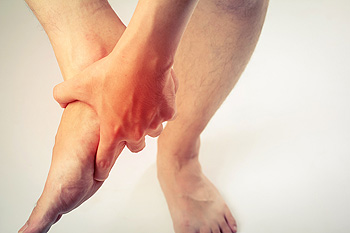
(616) 846-3400
Fax: (616) 846-3406

(616) 846-3400
Fax: (616) 846-3406

The foot condition known as plantar fibromatosis can also be referred to as Ledderhose disease. It is a rare condition where a nodule is embedded in the arch of the foot. It is often benign despite the pain and discomfort associated with it. One noticeable symptom of a plantar fibroma includes a firm lump in the arch of the foot, which may gradually increase in size. It can be caused by enduring a foot injury, frequently participating in running and jumping activities, or from taking certain medications. Having an MRI taken is often successful in diagnosing this condition and a biopsy may need to be performed. The pain may diminish when anti-inflammatory medications are taken as well as when orthotics are worn as they distribute the body’s weight more evenly. In severe cases when the plantar fibroma has significantly grown, surgery may be an option for permanent removal. If you suffer from this condition, it is advised that you seek the counsel of a podiatrist who can effectively guide you toward correct treatment techniques.
A plantar fibroma may disrupt your daily activities. If you have any concerns, contact Dr. Robbi Young of Grand Haven Foot & Ankle. Our doctor can provide the care you need to keep you pain-free and on your feet.
Plantar Fibroma
A plantar fibroma is a fibrous knot in the arch of the foot. It is embedded in the plantar fascia which is a band of tissue that extends from the heel to the toes along the bottom of the foot. There can be multiple plantar fibromas in the feet at the same time. There are no known causes for this condition. If you have a plantar fibroma, there will be a bump in the arch of your foot that cannot be missed. Any associated pain is most often due to a shoe rubbing against the nodule. Non-surgical options, such as steroid injections, physical therapy, and orthotics should be tried first. Surgery is a last resort and is the only thing that will remove a plantar fibroma entirely. Consult with a podiatrist for a proper diagnosis and to determine the treatment regimen that is right for you.
What Causes a Plantar Fibroma?
While there are no specific causes identified, a plantar fibroma can possibly come from genetic predisposition or the formation of scar tissue that forms from healing the tears in the plantar fascia.
What Are the Symptoms of a Plantar Fibroma?
There will be a noticeable lump in the arch of the foot that may or may not cause pain. If pain is felt, it is typically because a shoe is rubbing up against the lump or when walking or standing barefoot.
Treatment and Prevention
A plantar fibroma will not disappear without treatment, but it can get smaller and be a non-issue. If pain persists, a podiatrist examines the foot and when the arch of the foot is pressed, pain can be felt down to the toes. An MRI or biopsy might be performed to help diagnose or evaluate the plantar fibroma. The following non-surgical options are generally enough to reduce the size and pain of these nodules:
Surgery is considered if the mass increases in size and the patient continues to feel pain after non-surgical methods are tried.
If you have any questions please feel free to contact our office located in Grand Haven, MI . We offer the newest diagnostic tools and technology to treat your foot and ankle needs.